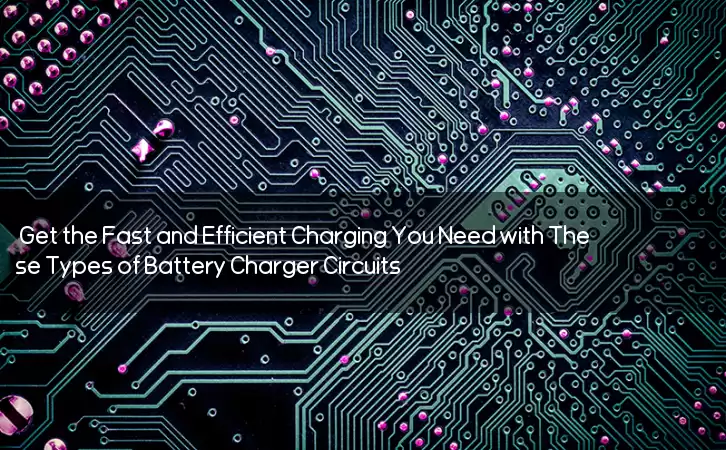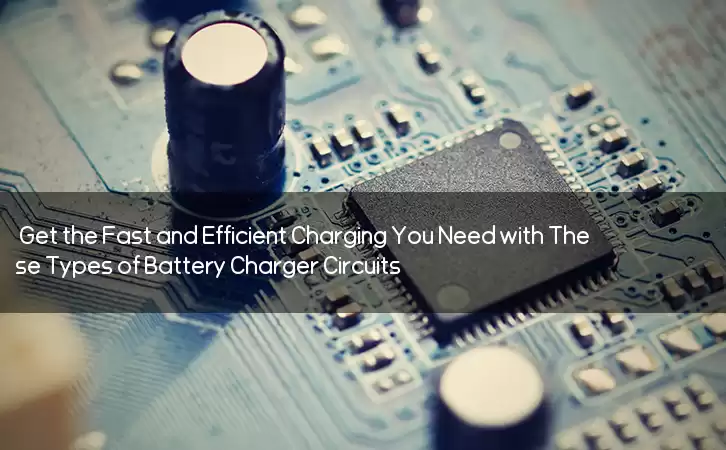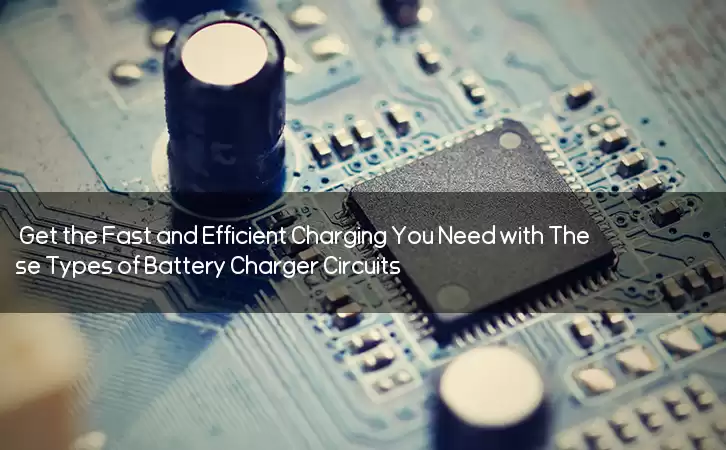Information Center
Get the Fast and Efficient Charging You Need with These Types of Battery Charger Circuits!
Published:2023-08-14 10:33:39 Author:Green WCND Views:63Battery chargers are an essential electronic component that help users recharge their batteries for use in various devices. With the rapid advancements in technology in recent years, there has been an increased demand for battery chargers that are more efficient and faster. Therefore, engineers have come up with several circuits to allow the charging of batteries in a more efficient and reliable manner. In this article, we will discuss the basics of battery charger circuits, some of the most common circuits in use today, and how they work.

Overview of Battery Chargers

A battery charger circuit typically consists of a source of AC or DC power that is converted to an appropriate voltage and current to charge a battery. Depending on the type of battery being charged (lead-acid, NiCd, NiMH, Li-ion or Li-Polymer), the charging circuit will have different charging profiles to ensure safe and efficient charging.

The charging profile of a battery refers to the different stages of charging that it goes through. In general, the charging profile will include three or four stages: bulk charge, absorption charge, float charge, and possibly equalization charge. The bulk charge stage is where the charger supplies a constant current to the battery until it reaches an appropriate voltage level. The absorption charge stage is where the charger charges the battery at a constant voltage while the current gradually decreases. The float charge stage is where the charger maintains the battery at a lower voltage to avoid overcharging while keeping it topped up. The equalization stage is only used for some types of batteries and involves a burst of higher voltage to equalize the cells in a pack.
Types of Battery Charger Circuits
1. Linear Charger:
The linear charger circuit is a simple and inexpensive circuit that is commonly used in mobile phones, toys, and other low-power devices. It operates by limiting the input current to a safe level and supplying a constant voltage to the battery until it reaches its maximum capacity. This process can be slow, especially for larger batteries, but it is reliable and safe.
2. Switching Charger:
The switching charger circuit is more complicated but provides a faster and more efficient charging process. It works by regulating the voltage and current levels using a switching regulator that switches the input voltage on and off rapidly. This allows power conversion to be done at high efficiency. Switching charger circuits are common in laptops, tablets, and high-capacity power banks.
3. Pulse Charger:
Pulse charger circuits are designed to deliver short pulses of charge to a battery. This helps to prevent the buildup of gas bubbles that can damage the cells in the battery. The circuit uses a pulse generator and a control circuit to produce a series of high-frequency pulses that charge the battery faster with less heat than other chargers.
Conclusion
In conclusion, battery charger circuits are essential components for many modern electronic devices. The type of circuit used will depend on the type of battery being charged, the required charging time, and the user’s budget. If you are designing a product that requires the use of a rechargeable battery, it’s essential to choose the right battery charger circuit to ensure safety, reliability, and efficiency. As technology advances, we can expect to see even more innovative and efficient battery charging circuits in the future.
Power Adapter Design and Customization Guide for Portable Electric KettlesI. Common Design Types for Portable Electric Kettle Power AdaptersPortable electric ke···
I. Common Design Types of Power Adapters External Independent Type (Most Common) Design: A standalone adapter (e.g., "black brick") connected to the p···
Handheld Vacuum Cleaner Power Adapter Selection GuideIntroductionHandheld vacuum cleaners have become a mainstream tool for household cleaning due to their port···
Drill Power Adapter Selection Guide.drill-container { font-family: Arial, sans-serif; line-height: 1.6; max-width: 800px; margin: 0 auto; padding: 20px; } .dril···





